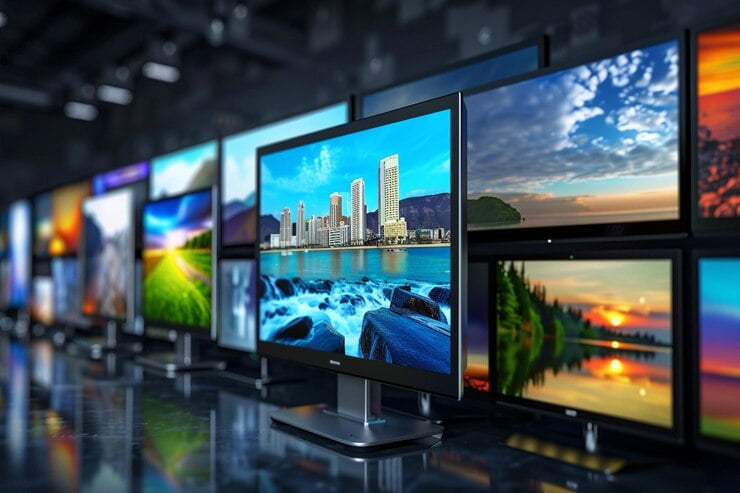In the present era of digitalization, there are new ways through which a lot of companies and individuals share information, entertain, and communicate their target message. A recent popular question has been, “Can You Use Digital Signage as a TV?” It can, however, be likened to walking on a tightrope because there is a thin line of differentiation that exists between what digital signage stands for and the norm associated with a traditional television set. This article delves into the specifics of how digital signage actually works with regard to using it like a TV and the benefits and limitations.
Understanding Digital Signage: What Is It?
Digital signage is the display of digital information on an LCD, LED, or projection screen showing information, advertising, a video, or real-time information. In simple terms, it is not just another television; it is usually part and parcel of a networked system with content management running over it and thus getting updated remotely. It is usually applied in retail, hospitality, corporate offices, healthcare, and public environments for customer engagement, message delivery, and product promotion.
Differences Between Digital Signage and Television
While both digital signage and television displays may look similar at first glance, there are several key differences:
1. Content Control: Digital signage is meant to display particular messages that can be programmed and timed with the help of certain applications. On the other hand, traditional TV is mainly used for entertainment purposes like watching the broadcast channels, streaming service or recorded media.
2. Purpose and Usage: It is used for business or communication where it is used for advertisement, promotion or passing important information. TV, however, is mainly used for entertainment or learning purposes in the comfort of one’s home.
3. Connectivity: Digital signage is used to display information that can be updated through the use of internet or network connection while TVs are primarily used with cable, satellite or streaming services.
4. Hardware and Software: The digital signage systems are typically characterized by more powerful hardware and software solutions that are used for content distribution across multiple displays. These are media players, cloud-based content management systems (CMS) and other input devices. A TV setup is usually easier, as all that may be needed is the screen, the tuner, and a remote control.
How to Use Digital Signage as a TV
It is possible to use digital signage as TV. Here’s how to make it happen:
1. Connecting a Digital Signage Display to a TV Receiver
To make digital signage work like a TV, one has to connect it to a TV tuner, which could be a cable box, a satellite receiver, or even a streaming device such as Roku, Apple TV, or Chromecast. Digital signage displays are usually equipped with HDMI or other similar interfaces, so it is not a problem to connect to these devices.
First, make sure that the TV receiver is compatible with the display’s input ports and that it supports the resolution and the refresh rate that are needed. After pairing, the display will work as a standard television set, meaning you can watch live broadcasts or stream content or videos on demand.
2. Using Digital Signage Software with Streaming Capabilities
There are certain digital signage software solutions that come with the streaming feature, meaning you can stream TV content on your digital signage screen. This approach offers more flexibility because one can program TV broadcasts or incorporate them with other forms of digital media. This is particularly helpful for businesses, such as sports bars or waiting rooms, that have live TV content with ads or promotional videos.
3. Incorporating Smart Digital Signage Solutions
Most of the current digital signage systems have integrated smart features that make them serve the dual purpose of signage displays and TVs. These smart screens are capable of supporting applications, streaming media, and networking, meaning that you can use them for various functions. For example, the same display can be employed to display advertisements in the course of the day and then switch to live broadcast of television programs in the evening.
Advantages of Using Digital Signage as a TV
There are several benefits to using digital signage displays as a TV:
1. Versatility and Flexibility
The digital signage is flexible in that it allows you to display different content types, including live TV broadcasts, promotional videos, and social media feeds. This is something that makes digital signage very suitable for organizations that would like to display content that changes frequently.
2. Centralized Content Management
This means that with digital signage, content can be changed, scheduled, and controlled from a central point for TV broadcasts or other media across the board. This is very helpful, especially for the big companies with many outlets or branches.
3. Cost Efficiency Over Time
The drawback is that the cost of purchasing digital signage is relatively high compared to a normal television set, but the advantages are numerous. Digital signage displays are designed to work round the clock, and therefore, there is no need to replace or repair them frequently. Also, the remote content management reduces the cost and time that are needed to make changes in the content.
4. Enhanced Audience Engagement
Integrating live TV with advertisements or promotions on digital signs can greatly enhance the viewers’ interest. For instance, a restaurant or a bar can broadcast a sports event while at the same time displaying offers on food and drinks on the same screen.
Potential Limitations to Consider
While digital signage can be used as a TV, it is important to understand the potential limitations:
1. Initial Cost and Setup
The only disadvantage is that the initial investment to put up a digital signage system may be a bit expensive as compared to the traditional TV setup. This includes the cost of the digital displays, media players, mounting hardware, as well as the content management software. However, the costs can be offset in the course of time due to the benefits associated with remote control and low maintenance.
2. Internet and Network Dependency
Internet or network connection is the backbone of digital signage since it requires the use of the internet to update and manage the content. If there is any problem with the network, then this could be a problem to the display, especially if it is being used in live streaming or any other real-time information update.
3. Complexity in Operation
For instance, if you are intending to use digital signage as a TV and you want to take advantage of the advanced features such as remote content management or streaming of different content, then you may have to learn how to go about it. This problem can be solved by ensuring that the staff that will be handling and operating the system have been trained adequately.
Best Use Cases for Digital Signage as a TV
Using digital signage as a TV is particularly beneficial in several environments:
• Hospitality Venues: Hotels, restaurants, and bars can use live TV content with the promotional content to provide the best experience to the customers.
• Corporate Settings: In the offices, the digital signage can be used for displaying news channels or other important information that may be of importance while at the same time displaying the company’s information.
• Retail Spaces: Some of the content that can be displayed on digital signage includes TV advertisements or branded content, which can be complemented with product offers or sale information.
• Healthcare Facilities: Some of the examples of digital signage applications in hospitals and clinics include displaying health information, patients’ waiting times, or even broadcasting television programs.
Conclusion: Is digital signage a good TV substitute?
Digital signage functions pretty much like a TV, but it is capable of so much more than showing programs and infomercials. It is a versatile tool of dynamic and engaging communication, with the help of which one can contact exactly where the target group is located. For any business looking to expand and make the most out of their communication channels, digital signage is a modern solution that combines the best of both worlds: television and digital marketing.
If you use digital signage with a TV instead, weigh the initial investment, associated potential challenges, and many advantages with increased capabilities. Proper digital signage setup becomes a powerful tool in audience engagement and brand promotion.





